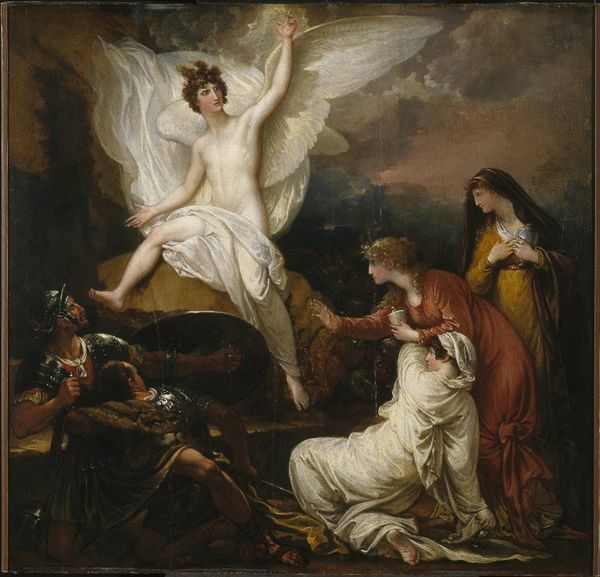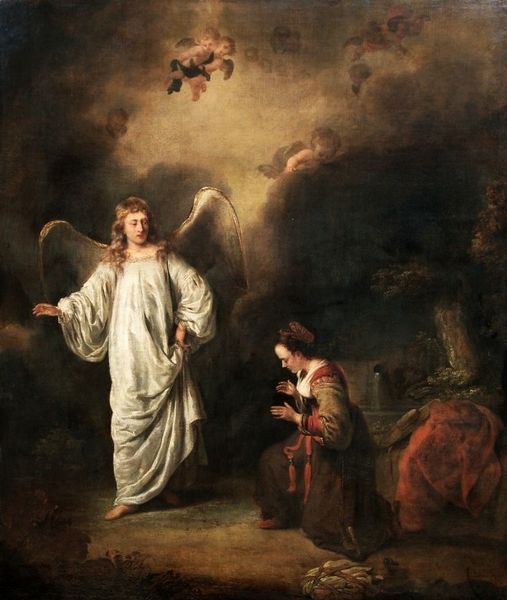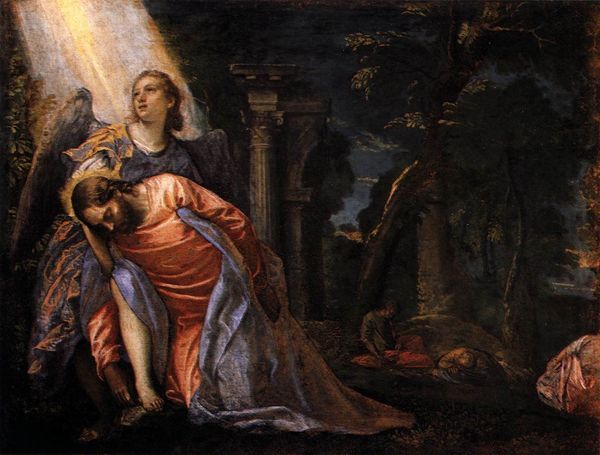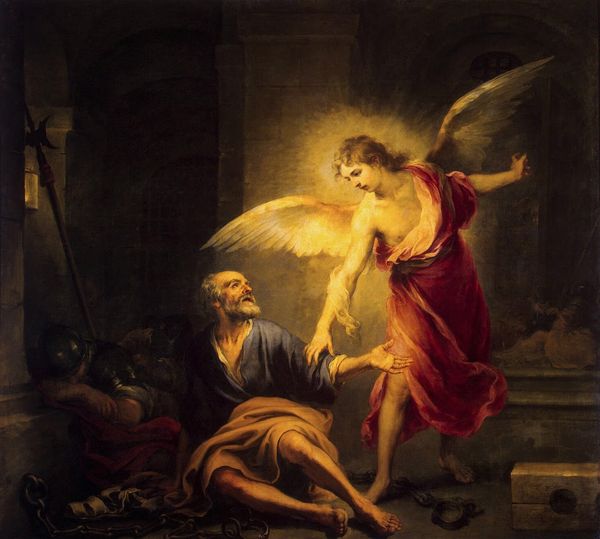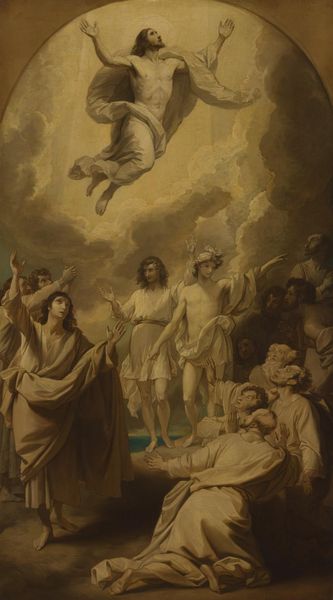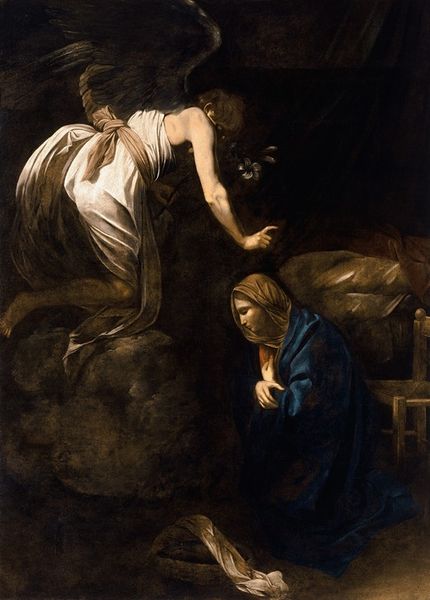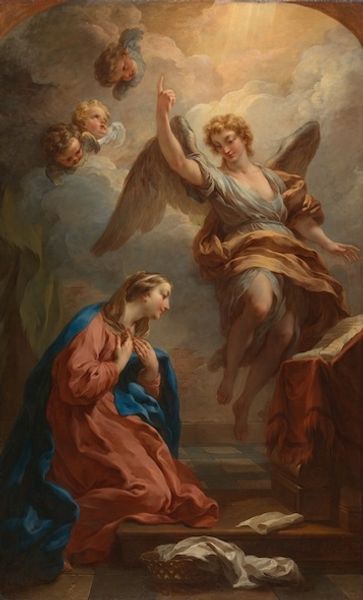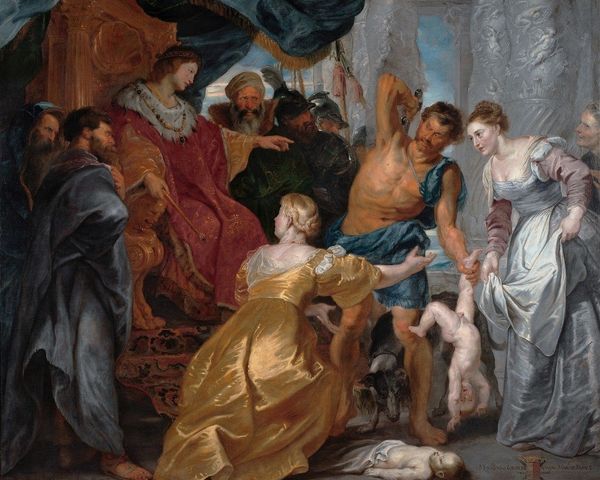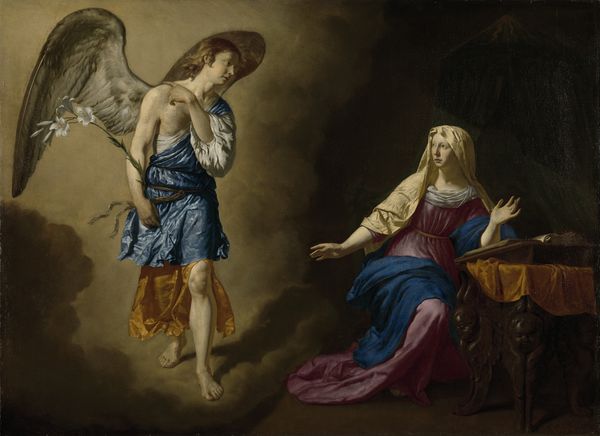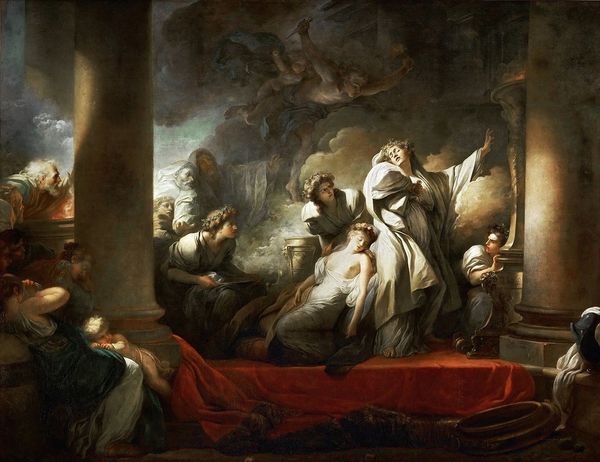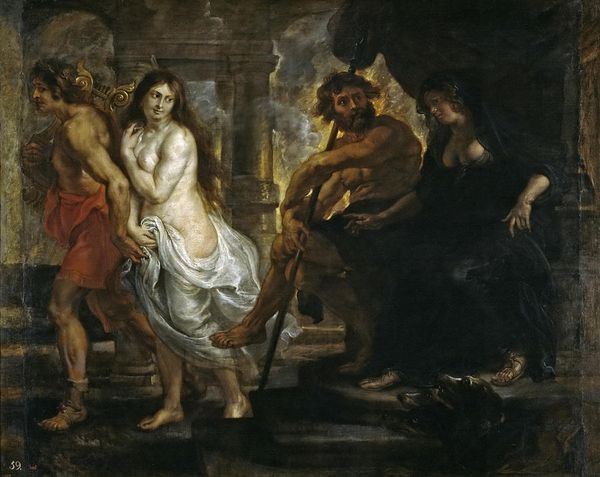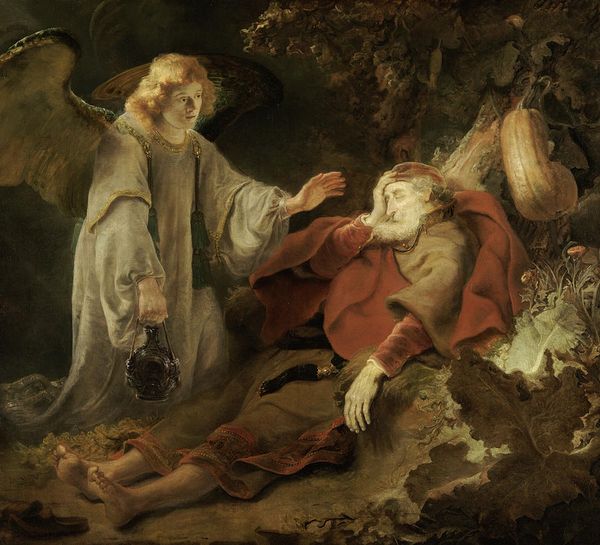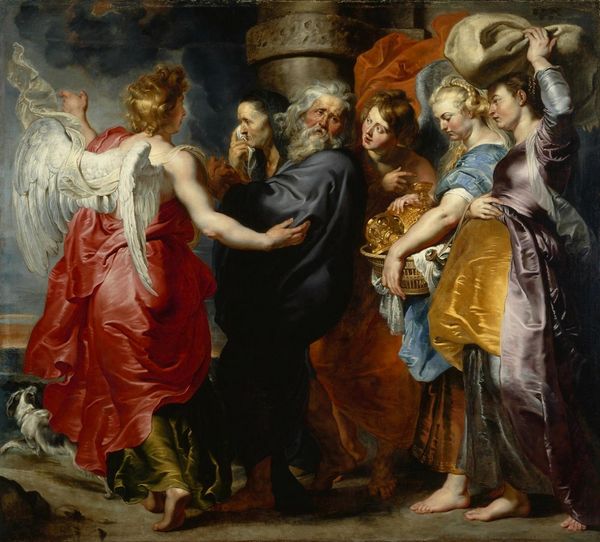
painting, oil-paint
#
baroque
#
dutch-golden-age
#
painting
#
oil-paint
#
figuration
#
oil painting
#
history-painting
Dimensions: 278.5 cm (height) x 357 cm (width) (Netto)
Ferdinand Bol painted 'The Holy Women at the Sepulchre' in the Netherlands during the Dutch Golden Age. The work depicts a scene from the Bible in which women visit the tomb of Jesus, only to find it empty and guarded by angels. In 17th-century Dutch society, religious art played a significant role, reflecting the country’s Protestant values and moral teachings. Bol’s painting engages with this tradition, yet it also reveals the influence of his teacher, Rembrandt, in its dramatic lighting and emotional intensity. Note how the discarded weapons and armor in the foreground suggest the defeat of earthly power in the face of divine intervention. Understanding Bol's painting requires us to consider how religious narratives were used to reinforce social norms, and how artists like Bol navigated the complex relationship between artistic expression, religious doctrine, and the expectations of their patrons and audiences. To do that, we need to consult historical documents, theological texts, and art-historical scholarship.
Comments
statensmuseumforkunst almost 2 years ago
⋮
With their theatrical gestures, the four women embody a full range of reactions that join up to form a cohesive sequence over time. Their agitation is contrasted by the calmness of the angels. Ferdinand Bol based his monumental painting on the biblical narrative (Luke 24: 1-10) about the women who had travelled with Christ from Galilee arriving at the tomb on the Sunday following Good Friday. The tomb had been sealed with a large stone, and soldiers guarded it to prevent anyone from removing the body and claiming that Jesus had risen from the dead as prophesied. Ferdinand Bol depicts the shock felt by the women when they discovered an open tomb and, instead of a dead Jesus, found two men in shimmering, luminous garb.
Join the conversation
Join millions of artists and users on Artera today and experience the ultimate creative platform.
